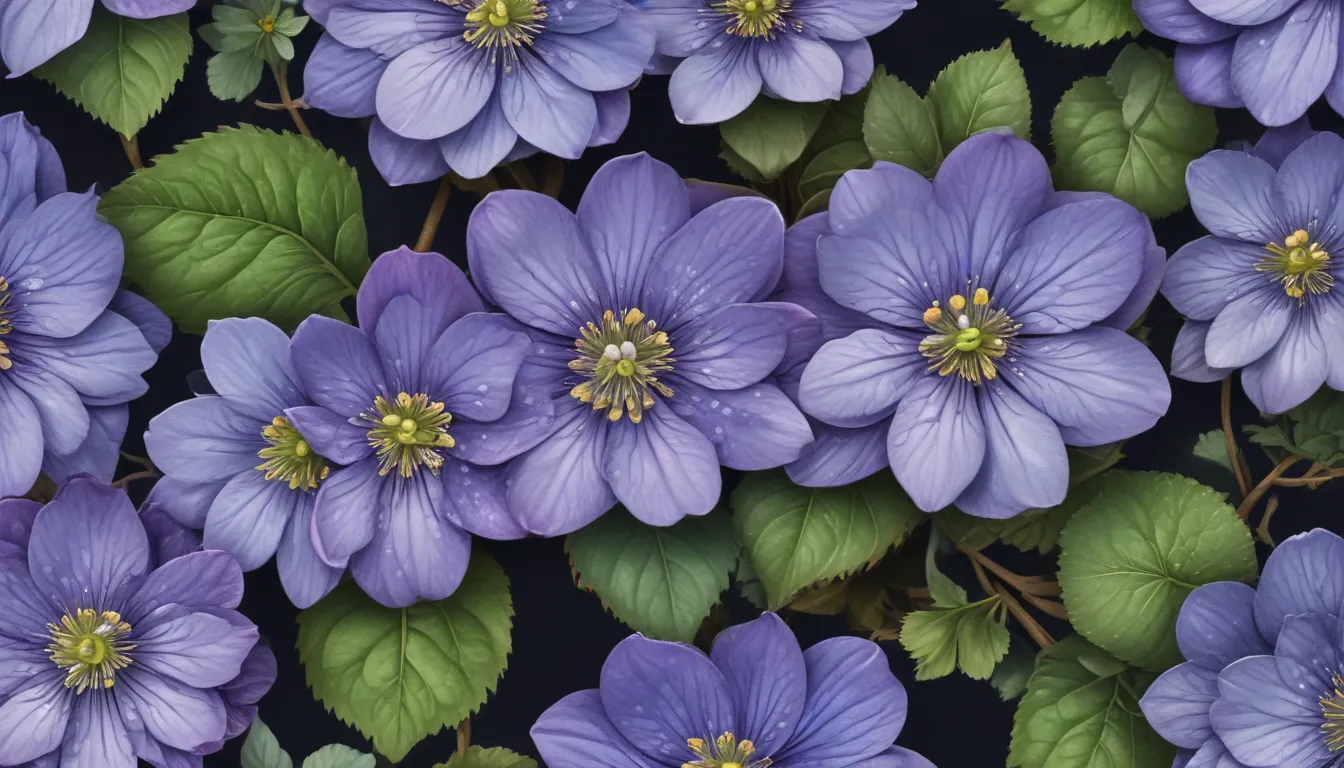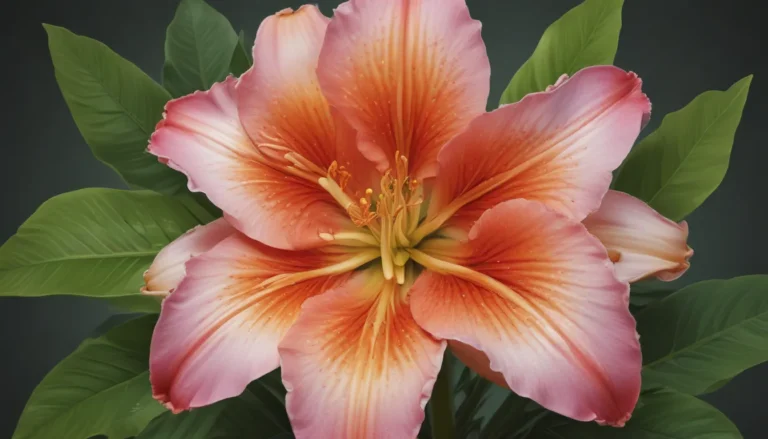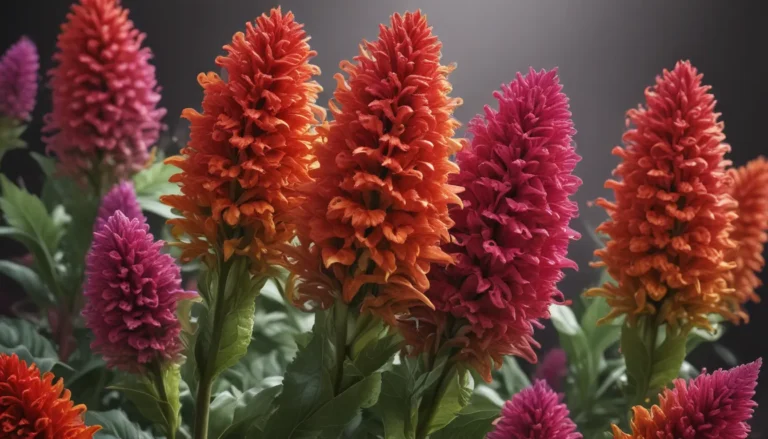The pictures we use in our articles might not show exactly what the words say. We choose these pictures to make you interested in reading more. The pictures work together with the words but don’t take their place. The words still tell you the important facts.
Hepatica, also known as liverwort, is a captivating plant that belongs to the buttercup family, renowned for its delicate and beautiful flowers in various shades of blue, purple, white, and pink. This perennial plant can be found in regions across North America, Europe, and Asia. Let's embark on a journey filled with wonder and exploration as we uncover 19 astonishing facts about hepatica, from its unique adaptations to medicinal uses.
Exploring the Enchanting Hepatica
Hepatica: The Delicate Spring Wildflower
Hepatica is a beautiful flowering plant that captivates gardeners and nature enthusiasts with its delicate appearance and vibrant colors. With its early blooming period, hepatica brings a burst of color to landscapes in late winter or early spring, adding a touch of beauty to the dormant winter surroundings.
The Diverse World of Hepatica Species
The genus Hepatica comprises approximately 15 recognized species, each with its unique characteristics and distribution across Europe, North America, and Asia. These species showcase a broad range of colors and petal formations, making each variety a delight to behold.
The Name “Hepatica” and Its Origins
The term "Hepatica" stems from the Greek word "hepar," meaning liver. This name was given to the plant due to the resemblance of its three-lobed leaves to the shape of the human liver, adding a touch of symbolism to its botanical identity.
Unveiling the Fascinating Traits of Hepatica
Color-Changing Leaves of Hepatica
A remarkable feature of hepatica is its leaves that transition in color throughout the year. From deep greens in spring and summer to shades of bronze and copper in autumn, the changing foliage adds to the plant's visual appeal and seasonal beauty.
Vibrant and Varied Flowers of Hepatica
Hepatica flowers are a spectacle of color, ranging from shades of blue and purple to pink and white. With six to fifteen petals per flower, hepatica blooms create an intricate and visually appealing display when multiple species or varieties are planted together.
Medicinal Properties of Hepatica
Studies have highlighted the medicinal properties of certain chemicals found in hepatica, including anti-inflammatory, analgesic, and antioxidant effects. This has led to the utilization of hepatica in traditional medicine for various ailments, showcasing its potential healing capabilities.
Nurturing Hepatica in Different Environments
Rock Garden Enthusiasts and Hepatica
Hepatica's low-growing habit and preference for well-drained soil make it a favorite among rock garden enthusiasts. Its delicate flowers and unique foliage add a touch of natural beauty to rock gardens, creating a tranquil and serene landscape.
Attracting Pollinators with Hepatica
The vibrant colors and nectar-rich flowers of hepatica attract a multitude of pollinators, including bees, butterflies, and insects. These creatures play a crucial role in hepatica's reproduction, contributing to the biodiversity of the ecosystem.
Conservation Efforts for Rare Hepatica Species
Some species of hepatica are at risk due to habitat loss and over-collection, leading to conservation efforts to protect these precious plants. By safeguarding rare species, we can ensure their survival for future generations to appreciate and enjoy.
Symbolism and Inspiration of Hepatica
Cultural Significance of Hepatica
In various cultures, hepatica holds symbolic meanings associated with love, protection, and rebirth. Its resilience and early spring blooming have made it a symbol of hope and new beginnings, showcasing the plant's cultural significance.
Traditional Folk Remedies with Hepatica
Throughout history, hepatica has been utilized in traditional folk remedies for liver disorders, respiratory ailments, and digestive issues. Its reputation for healing properties has made it a valuable plant in natural medicine practices.
The Nymph Hepatica in Greek Mythology
According to ancient Greek mythology, hepatica is named after the nymph Hepatica, known for her beauty and grace as a companion of the goddess Artemis. This mythological connection adds an element of enchantment to the plant's botanical identity.
Cultivating Hepatica and Appreciating its Beauty
Growing Hepatica in Home Gardens
Hepatica is generally easy to grow in home gardens, thriving in well-drained soil, partial shade, and optimal moisture levels. Its ability to adapt to diverse environments makes it a versatile and enchanting addition to any garden landscape.
Artistic Inspiration from Hepatica
The delicate and ethereal nature of hepatica has inspired artists and poets throughout history, symbolizing renewal and evoking a sense of wonder and awe. Its graceful beauty and association with spring offer a source of creative inspiration for artistic endeavors.
Embracing the Wonder of Hepatica and Nature
Hepatica's captivating beauty and intriguing traits make it a truly remarkable spring wildflower. From its early blooming period to its medicinal properties, hepatica holds a treasure trove of surprises waiting to be discovered. Whether you're a plant enthusiast or simply curious about the wonders of nature, exploring the astonishing facts about hepatica is sure to leave you in awe.
Conclusion
Hepatica is a fascinating plant with a rich history and a multitude of incredible facts that showcase its beauty and botanical significance. Whether adorning your garden or serving as a source of inspiration, hepatica continues to enchant and inspire us with its diverse traits and cultural symbolism.
FAQs
Q: Where can Hepatica be found?
A: Hepatica is native to regions of Europe, Asia, and North America, thriving in woodlands, meadows, and rocky areas.
Q: When does Hepatica bloom?
A: Hepatica typically blooms in early spring, from February to April, depending on the climate.
Q: Are there different colors of Hepatica flowers?
A: Yes, Hepatica flowers come in various colors, including shades of blue, purple, pink, and white.
Q: Is Hepatica a medicinal plant?
A: Yes, Hepatica has been used in traditional medicine for centuries, believed to possess anti-inflammatory and diuretic properties.
Q: Can Hepatica be grown in a garden?
A: Yes, Hepatica thrives in gardens, especially in shady areas with moist, well-drained soil.
Q: How long do Hepatica flowers last?
A: Hepatica flowers typically last around two weeks, showcasing a short but visually stunning lifespan.
Q: Is Hepatica toxic to pets?
A: Some sources suggest that Hepatica may be mildly toxic to cats and dogs in large quantities, so caution is advised.
Explore the Wonders of Nature with Hepatica
Immerse yourself in the enchanting world of hepatica and uncover the beauty and mysteries of this captivating plant. Whether you're drawn to its delicate blooms, medicinal properties, or cultural significance, hepatica offers a wealth of inspiration and admiration for nature enthusiasts and curious minds alike.
Remember to appreciate the intricate details and symbolic meanings of hepatica as you explore the astonishing facts that make this spring wildflower truly remarkable. Embrace the wonders of nature and let the magic of hepatica inspire you to connect with the natural world around you.






